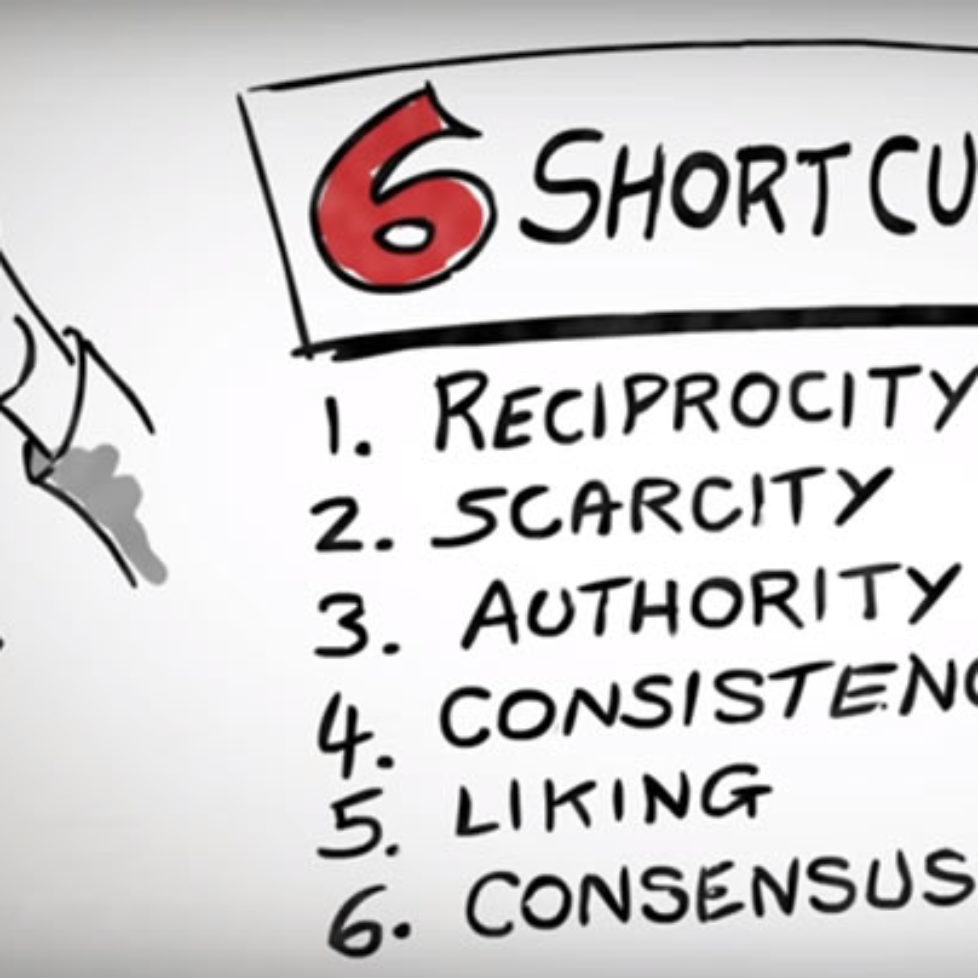The Science of Persuasion
6 universal principles of persuasion are outlined in the short video below from Influence At Work. These six principles are:
Reciprocity
Scarcity
Authority
Consistency
Liking
Consensus

6 universal principles of persuasion are outlined in the short video below from Influence At Work. These six principles are:
Reciprocity
Scarcity
Authority
Consistency
Liking
Consensus


This year marks the 10th anniversary of the coining of the term “Cyber Monday”. It grew out of the growing practice of Americans returning to a normal work schedule off the extended Thanksgiving weekend and buying items online on this Monday each year.
2015 marks the first time that 33 Dimensions will be getting into the act and offering our own great deals for new and existing customers. Please check the list below of the primary services we offer and give us a call or Contact Us for a low cost, high quality and customized solution, delivered in a timely manner.
Ric Albano
Owner and Chief Designer
33 Dimensions LLC
 Not in the market for any of the above?
Not in the market for any of the above?
No problem!
You can shop for great Cyber Monday deals to your heart’s desire at Amazon.com and still support our great little small business. Just click Our Amazon Affiliate Link and start shopping!

The first three steps should be done in this order.
Establishing a domain is where your online life begins. The trick is finding one which isn’t already being utilized. If you’re lucky (like we were) you can use the dot-com of the exact name of your business. In all likelihood, you may have to be a little creative. There are many online tools for checking if a domain name is available and registering a domain is still pretty inexpensive at about $15 per year.
“Hosting” is the physical location where your website will reside. While it is certainly possible to host a site on your own computer, it is not optimal in most situations because your computer would have to available to international traffic 24/7 and, without advanced security, may be vulnerable to cyber attacks. For these reasons, most small business owners will enlist a professional hosting company to host their website(s) with costs that can range widely, depending on the type of hosting. When choosing the right hosting plan, you want to get enough storage, bandwidth, adaptability, security, and performance without going overboard and incurring unnecessary costs.
This is, by far, the most important, complex, yes stress-inducing step in establishing your online presence. There are literally a million ways to go, from companies with big names which will offer you “free” business websites (of course, they’re not really “free”) to an assortment of web design firms and freelancers. Here are some of the vast subjects which may need to be considered and/or included with your website:
Steps 4-10 can be done in any order (or all at the same time), after the first three steps have been completed.
SEO is an ongoing process of keeping your page relevant to search engines and achieving the best search results. Each year, this process gets more and more complex as major search engines like Google constantly change their algorithms in order to produce the most valid and natural results for any searched word or phrase. Optimizing a website involves several diligent practices:
In today’s world, it is important for businesses to establish a presence on social media. While some dismiss social media as a fad which will soon run it’s course, there is little doubt of the advertising and awareness value of a social media presence. While Facebook and Twitter are the most popular and have the most users (so they are usually the first social media channels utilized), there are a few other technologies and techniques businesses should consider.
6. Email and Marketing
Recent studies have shown that, despite the meteoric rise of social media, Email marketing far surpasses any social media medium when it comes to return on investment. While this is one of the more highly regulated areas of the online experience, there are several fine services which help you manage and gather contacts and construct professional Email newsletters while keeping your company compliant with spam laws.
This is a relatively new but fast growing requirement for an online presence. It is important to be able to quickly and effectively share files, documents, and media using a business-oriented storage service. This is also often used as a safeguard for disaster recovery. Being so new, there are many (relatively untested) options to choose from, but some of the emerging leaders in this market include; Dropbox, Google Cloud Storage, and Carbonite.
We’re all in business to get paid and it has become increasingly easier to accept payments online. With Ecommerce, there is a wide range of possibilities, from simple PayPal transactions to complex online shopping carts which require huge databases to function. Further, recent years have brought us great online invoicing services like Fresh Books and cool mobile credit card scanners like Square.
This is probably the most gut-wrenching subject to think about, but also the most important. Truth is, there are less than honorable people out there who think it is good sport to prey on honest services, businesses, and consumers. While the dynamic nature of technology makes it hard to pinpoint exact measures (books have been written and will be re-written), a balanced, common sense approach should prevail.
This is an ever-expanding, catch-all of “other” online tools which may be beneficial to your business:
One more thing. While I tried to stay as general as possible with these ten items, the truth in mid-2013 is that you’ll find Google involved in most of these steps (probably all seven of the bottom steps). If you have a Gmail account, that account is now your login for Google +, Google Places, Google Maps, Google Drive, AdWords, Analytics, Webmaster Tools, YouTube, and scores of other related services (including the good ole search engine itself). While there is no doubt that this can be a great convenience (not to mention virtually free), we can only hope that competition will spread these services out in the future while maintaining the incredible technical advances of recent years.